Art Fairs
See 5 of the Most Memorable—and Political—Works at Buenos Aires’s ArteBA Fair
A tradition of engagement with speaking truth to power surfaces throughout the fair's booths.
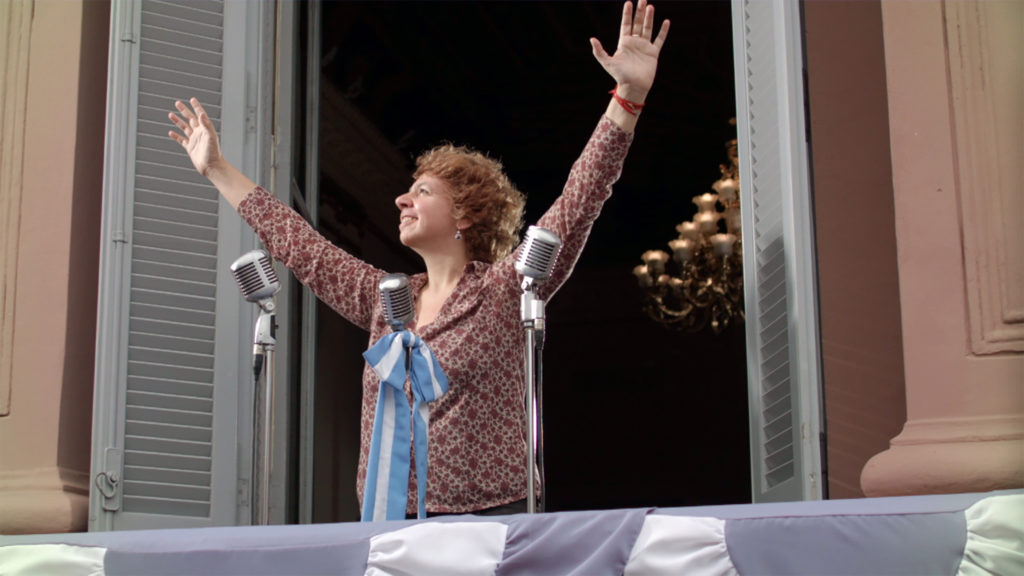
A tradition of engagement with speaking truth to power surfaces throughout the fair's booths.

At Buenos Aires’s ArteBA fair, which opens to the public today (through May 27), you’ll see plenty of works that carry on the rich tradition of abstraction in Latin American art. But you’ll also discover a number of works inspired by front-page news. Protest, dictatorships, and government misdeeds have all found their way into the booths at the 26th edition of ArteBA, the longest-running art fair in Latin America. Here are five of the fair’s most memorable political works.
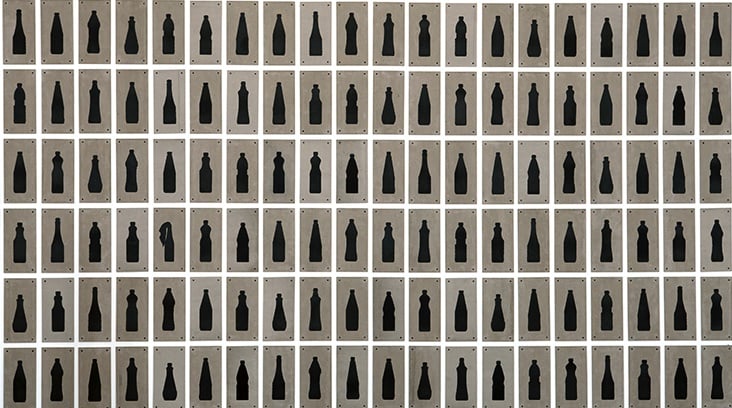
Dora Longo Bahia, Black Bloc (2014). Image courtesy of the artist and Galeria Vermelho.
Dora Longo Bahia’s works take as their subject the political demonstrations decrying government corruption and police brutality that swept across several Brazilian cities in 2013. Protesters frequently carried bottles of vinegar to counteract the effects of the tear gas police used to disperse the demonstrations. Bahia’s Black Bloc (2014) shows the silhouette of vinegar bottles on small concrete plates. But look carefully: One of the bottles has a cloth in its mouth, transforming it into a Molotov cocktail—a nod to the specter of violence that can hover over peaceful dissent. Bahia’s works are priced in the range of $5,000.
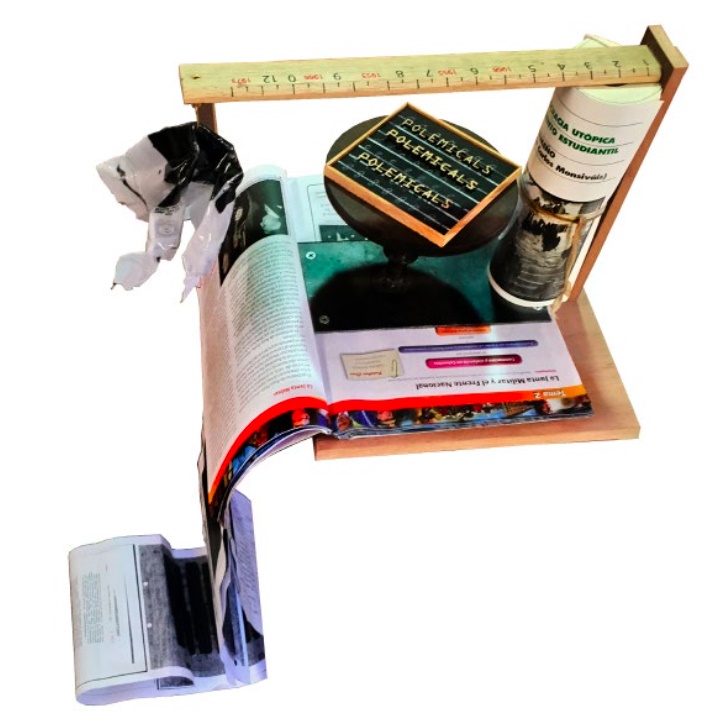
Voluspa Jarpa, De los Artilugios Cotidianos (2014). Courtesy of the artist and Galeria Isabel Aninat.
Argentinian artist Voluspa Jarpa’s De Los Artilugios Cotidianos (From Everyday Things) (2014–2015) mashes up commonplace objects with more sinister ones. Encyclopedias and history books look as if they are spitting out ribbons of paper—which, on closer inspection, turn out to be redacted CIA documents. the assemblages reference the history of American interventions in Latin American societies, specifically the US government’s support for certain dictatorships. (The dark side of history can’t stay hidden, Jarpa seems to say.) Atop it all, a ruler is printed with the dates of coups d’état in the region; this part of the work calls to mind Marcel Duchamp’s 3 Standard Stoppages (1913-14), in which fundamental units of measurement are used for new purposes. The work is priced at $7,000.
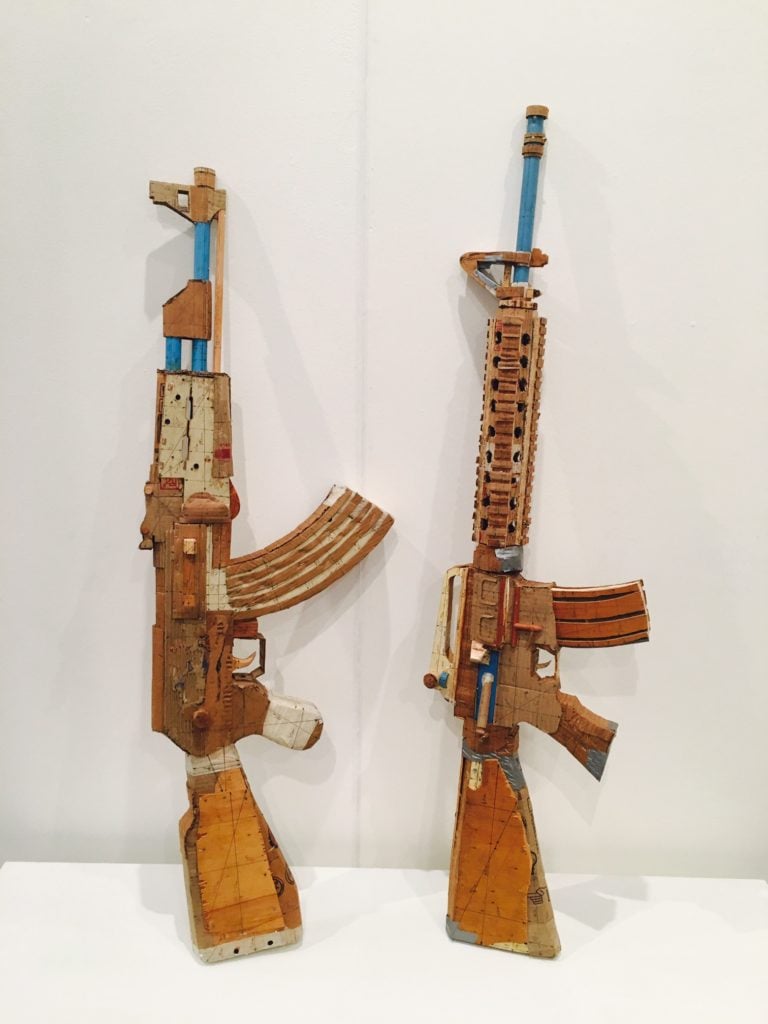
Work by Norton Maza at Isabel Aninat. Courtesy of the gallery.
Norton Maza’s sculptures AK-47 and M-16 are a pair of mock automatic rifles constructed from cardboard, scraps of wood, and similar materials scavenged from the trash, leaning against the wall. Although the works look at first like they could be straight out of the studio of Tom Sachs, these are not a cheeky, boyish adaptation of low-fi craft. Instead, they reference the decades-long operation in which Chilean dictator General Augusto Pinochet allegedly allowed secret police and military forces to ship tons of cocaine to the US and Europe. The sculptures are priced at $3,000 each.
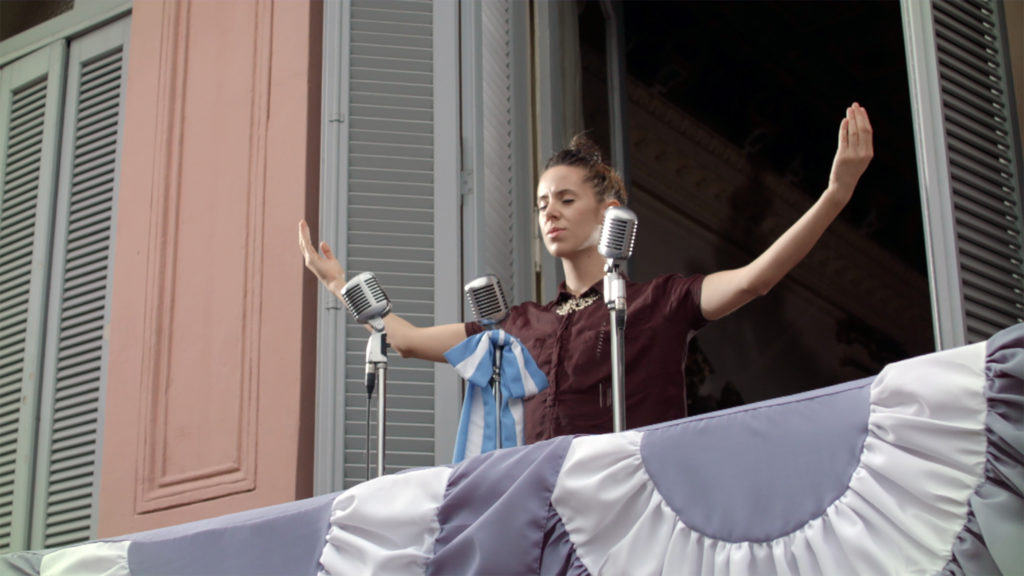
Eva, I’ll Be Back, and I’ll be Performers (Eva, volveré y seré performers) (2017). Courtesy Ruth Benzacar Galería de Arte, Buenos Aires.
The video Eva, I’ll Be Back, and I’ll be Performers (Eva, volveré y seré performers) (2017) captures everyday people on a balcony of the Pink House, Argentina’s equivalent of the White House. It was from this balcony that Eva Perón, wife of president Juan Perón, gave her final speech. Eva—who some say was more popular than her husband, and who inspired a Broadway musical by Andrew Lloyd Webber—died at 33, and the video lasts a corresponding 33 minutes. In it, the 300 silent amateur performers react to the historic setting in various ways: some raise their hands as if greeting a crowd of thousands; others stand silently with their eyes closed; a few laugh. In order to bring this piece of the Pink House home with you, you’ll need to pony up $10,000 for one of the edition of three.
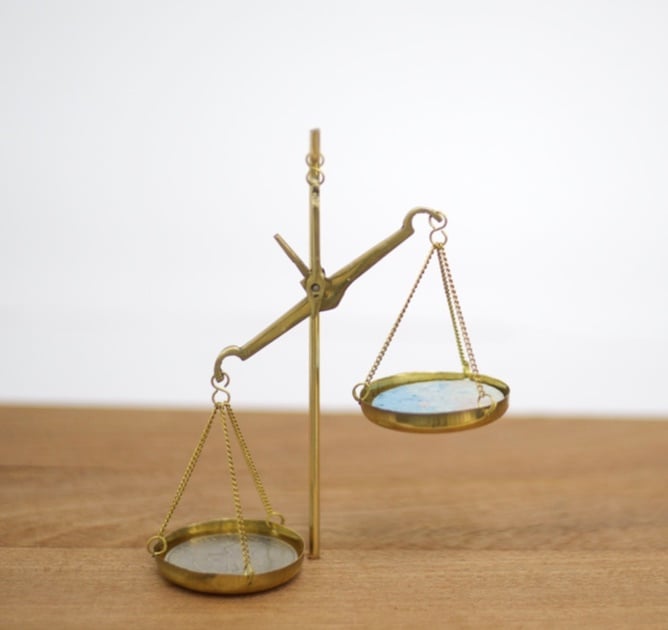
Agustina Woodgate, Cambio de devisas (2017). Courtesy Barro Arte Cotemporaneo.
The balance of power between the US and her Southern neighbors is neatly summed up in Agustina Woodgate’s Cambio de Divisas (Currency Exchange) (2017). A small balancing scale bears, on one side, a US dollar coin and, on the other, Argentinian paper pesos. Woodgate sanded down the surface of the peso so that what was printed on it has vanished. The scale tips, naturally, in favor of the dollar. In those weighty US dollars, the work’s price is $10,000.